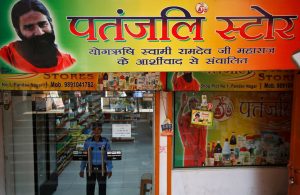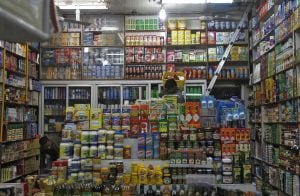Bullish about India’s FMCG sector, says Harish Manwani

KV Prasad Jun 13, 2022, 06:35 AM IST (Published)
 Listen to the Article (6 Minutes)
Listen to the Article (6 Minutes)
Summary
Hindustan Unilever hopes to continue to focus on strategies leading to market development.
FMCG sector veteran and former chairman of consumer goods major Hindustan Unilever, Harish Manwani, said he is bullish about the medium to long term outlook for the FMCG sector in the country.
“We are entering a phase where we are optimistic that we are getting into a higher growth phase then what we have seen,” said Manwani, who has just retired as chairman from HUL after spending over four decades in the company.
Hindustan Unilever hopes to continue to focus on strategies leading to market development, he further said, and added areas like premiumisation, digitisation will be in focus going forward.
The FMCG major has also recognised naturals as an important category of growth and has been launching products catering to this growing segment.
Watch the video here.
Edited Excerpt:
Q: When you look over the last couple of quarters, businesses have had their ups and downs, we have seen volumes being impacted across the industry as we speak. Do you see that we are at the end of tunnel, do you see light at the end of the tunnel, and do you see value as well as volume growth both picking up as we enter into FY19-FY20?
A: I think maybe I am an eternal optimist but I have always believed that in India there is always a light at the end of the tunnel. I think the question is how long is the tunnel; but there is always light at the end of the tunnel.
India is a market, particularly from an FMCG point of view, where we are relatively underdeveloped in terms of our consumption and I think the potential therefore going forward is huge in every single sector and segment. So I feel very bullish medium to long term about the outlook for the industry.
Clearly there will be some issues from time to time in the short term. If you look at where we are today, and you begin to see how in the last few quarters, generally there are signs of a pickup. Obviously in India and for the FMCG sector, rural is critical.
Hopefully if you have a good monsoon, which it looks like we are going to have, and some of the benefits of all the various schemes that are going on in the rural areas and also if you like the impact of GST, I think if you combine all this, we could see a pickup in demand.
We are beginning to see signs of that and I feel very hopeful that things will look better and certainly in the medium to long term I feel very positive about the outlook for the industry.
Q: How long are we away from pre-GST growth levels? Is there maybe two years, three years, do you think it will be end of this financial year we could be back to pre-GST levels in terms of growth for the industry?
A: When you talk about pre-GST, you are talking about a certain phase. Remember there was another phase before that. Business has cycles at the end of the day and I think the important thing is where are we in that cycle and how long will that phase last.
To my mind, we are actually now entering a phase where I feel optimistic that we should be getting into a higher growth phase than we have seen.
Having said that, I do not know there is going to be pre-GST levels or higher or lower, that we will see. However, I would not worry about that because at the end of the day, if you spend all your time trying to forecast this to the last percentage, I think it is a little bit of a waste of time.
It is better to focus on giving consumers what they want and importantly, this is a really important point from our point of view, we are market leaders in many categories, we also have to drive market development and we are absolutely clear about that. We need to make sure that we drive market growth in some of the categories. So if you take for example some of the personal care categories, we have always been market builders, we are market makers, we don’t just go for market share, we try to make markets.
Q: FMCG market has been no stranger to competition. Companies have constantly been trying to protect their turf, defend themselves against competition. You have seen many trade wars panning out in the course of your journey. In the Indian market as we speak what is your first instinct or your first reaction to this whole Ayurveda disruption that happened in the Indian market?
A: Again I just want to remind you, this is not the first time that a new competitor enters the market. This is not the first time that we have seen a particular consumer trend in the market.
That is the joy of doing business particularly in the consumer goods market because there are trends, there are macro trends and then there are new competitors.
We like that; that is what keeps us alert and that is what keeps us agile. So when you talk about this trend towards naturals and Ayurveda, of course we recognise that.
It is an important trend, consumers want it, and it is part of our whole global trend of wanting to buy fresh and natural. This is part and parcel of a very important global trend and in India also we have seen that now manifest itself in terms of new products and so on and so forth.
We ourselves are very clear, we have to be part of this opportunity and we are ceasing that opportunity in multiple ways. First, through ensuring that we can use some of our own current brands to create if you like more natural variants around it which we have done whether it is in our toothpaste or indeed it is in our skincare products.
We have got ayurvedic versions, we are trying to launch specific brands that we believe can cater to this segment. Indulekha is flying off the shelves, doing extremely well.
Q: Do you think this whole threat that an Ayurvedic disruptor has blown over because businesses have come to terms with the kind of focus towards the natural segment now.
A: It is not about competitors, it is more about the consumers and the trend. I think the trend exists in the market. It is not gone away; if that is what you are asking me, we have the same narrative to tell you that we had last quarter and the quarter before.
Of course this is a trend; now whether that trend kind of – the growth rate in that segment slows down or not, we will see. However, we are assuming that there is a trend in the market and we need to make sure that we are very much part of it and in some instances actually leading that trend.
Q: Premuimisation has been a big focus area for Hindustan Unilever (HUL). In terms of homecare and personal care both, specifically when we talk about tier-II and tier-III cities, how soon do you see them up scaling themselves to more premium brands? Do you think that premuimisation is something that is perhaps going to be one of the biggest and long lasting focus areas for the company?
A: We do recognise premuimisation as an important aspect and it is easy to understand why. India is a fast growing market, standards of living is going up, people’s incomes are going up, and therefore we do expect people to up trade and move up to buying better products.
Having said that, you have to also recognise that again there is diversity in India and that is why we still believe that our portfolio strategy of ensuring that we continue to premiumise some of our offerings even as we continue to be relevant at the mass end and the middle end is equally important.
Q: As you step away what is your vision for HUL in 2025? Which do you think would perhaps be the categories that would lead growth for the company?
A: The good thing is that part of our strategy remains if you like fixed because that is our DNA and our DNA is that we do believe that we have to be market makers.
As we look into any one of our categories that we operate in or sectors that we operate in, we want to make sure that we lead market development for adjacent categories and premuimisation. We want to lead that.
Our vision also is that we need to remain relevant for the consumers of tomorrow and the big trend that we are seeing of course here is this whole digitisation and technology and I think we have been therefore proactive in terms of ensuring that the way we market our brands or the way we distribute our brands uses some of the best technologies to be relevant to the consumers of tomorrow.
We are also conscious that big data is going to be an important competitive advantage. So, we are actually moving towards, in fact ensuring, that we are able to use big data to segment our markets, to reach our consumers in a more targeted way.

Elon Musk forms several ‘X Holdings’ companies to fund potential Twitter buyout
3 Mins Read
Thursday’s filing dispelled some doubts, though Musk still has work to do. He and his advisers will spend the coming days vetting potential investors for the equity portion of his offer, according to people familiar with the matter

KV Prasad Journo follow politics, process in Parliament and US Congress. Former Congressional APSA-Fulbright Fellow










 Listen to the Article
Listen to the Article  Daily Newsletter
Daily Newsletter









